Travelers 2014 Annual Report Download - page 65
Download and view the complete annual report
Please find page 65 of the 2014 Travelers annual report below. You can navigate through the pages in the report by either clicking on the pages listed below, or by using the keyword search tool below to find specific information within the annual report.-
 1
1 -
 2
2 -
 3
3 -
 4
4 -
 5
5 -
 6
6 -
 7
7 -
 8
8 -
 9
9 -
 10
10 -
 11
11 -
 12
12 -
 13
13 -
 14
14 -
 15
15 -
 16
16 -
 17
17 -
 18
18 -
 19
19 -
 20
20 -
 21
21 -
 22
22 -
 23
23 -
 24
24 -
 25
25 -
 26
26 -
 27
27 -
 28
28 -
 29
29 -
 30
30 -
 31
31 -
 32
32 -
 33
33 -
 34
34 -
 35
35 -
 36
36 -
 37
37 -
 38
38 -
 39
39 -
 40
40 -
 41
41 -
 42
42 -
 43
43 -
 44
44 -
 45
45 -
 46
46 -
 47
47 -
 48
48 -
 49
49 -
 50
50 -
 51
51 -
 52
52 -
 53
53 -
 54
54 -
 55
55 -
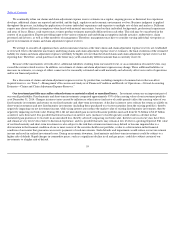 56
56 -
 57
57 -
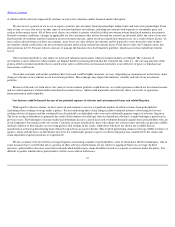 58
58 -
 59
59 -
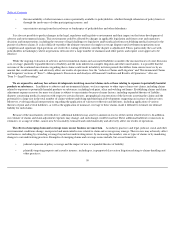 60
60 -
 61
61 -
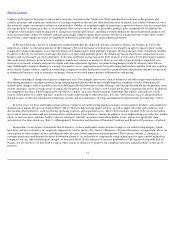 62
62 -
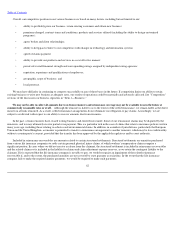 63
63 -
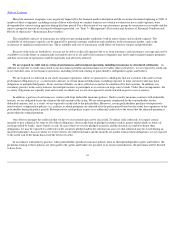 64
64 -
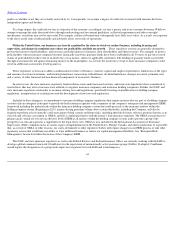 65
65 -
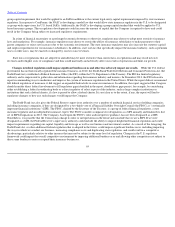 66
66 -
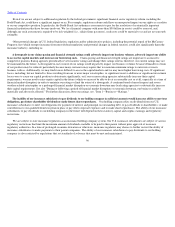 67
67 -
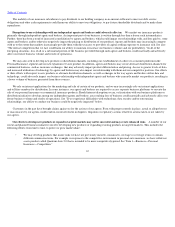 68
68 -
 69
69 -
 70
70 -
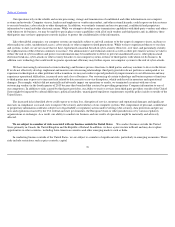 71
71 -
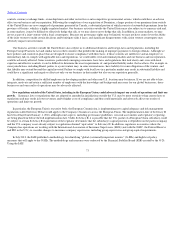 72
72 -
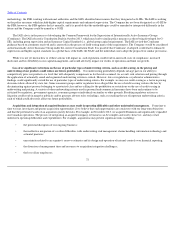 73
73 -
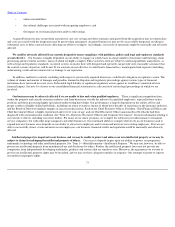 74
74 -
 75
75 -
 76
76 -
 77
77 -
 78
78 -
 79
79 -
 80
80 -
 81
81 -
 82
82 -
 83
83 -
 84
84 -
 85
85 -
 86
86 -
 87
87 -
 88
88 -
 89
89 -
 90
90 -
 91
91 -
 92
92 -
 93
93 -
 94
94 -
 95
95 -
 96
96 -
 97
97 -
 98
98 -
 99
99 -
 100
100 -
 101
101 -
 102
102 -
 103
103 -
 104
104 -
 105
105 -
 106
106 -
 107
107 -
 108
108 -
 109
109 -
 110
110 -
 111
111 -
 112
112 -
 113
113 -
 114
114 -
 115
115 -
 116
116 -
 117
117 -
 118
118 -
 119
119 -
 120
120 -
 121
121 -
 122
122 -
 123
123 -
 124
124 -
 125
125 -
 126
126 -
 127
127 -
 128
128 -
 129
129 -
 130
130 -
 131
131 -
 132
132 -
 133
133 -
 134
134 -
 135
135 -
 136
136 -
 137
137 -
 138
138 -
 139
139 -
 140
140 -
 141
141 -
 142
142 -
 143
143 -
 144
144 -
 145
145 -
 146
146 -
 147
147 -
 148
148 -
 149
149 -
 150
150 -
 151
151 -
 152
152 -
 153
153 -
 154
154 -
 155
155 -
 156
156 -
 157
157 -
 158
158 -
 159
159 -
 160
160 -
 161
161 -
 162
162 -
 163
163 -
 164
164 -
 165
165 -
 166
166 -
 167
167 -
 168
168 -
 169
169 -
 170
170 -
 171
171 -
 172
172 -
 173
173 -
 174
174 -
 175
175 -
 176
176 -
 177
177 -
 178
178 -
 179
179 -
 180
180 -
 181
181 -
 182
182 -
 183
183 -
 184
184 -
 185
185 -
 186
186 -
 187
187 -
 188
188 -
 189
189 -
 190
190 -
 191
191 -
 192
192 -
 193
193 -
 194
194 -
 195
195 -
 196
196 -
 197
197 -
 198
198 -
 199
199 -
 200
200 -
 201
201 -
 202
202 -
 203
203 -
 204
204 -
 205
205 -
 206
206 -
 207
207 -
 208
208 -
 209
209 -
 210
210 -
 211
211 -
 212
212 -
 213
213 -
 214
214 -
 215
215 -
 216
216 -
 217
217 -
 218
218 -
 219
219 -
 220
220 -
 221
221 -
 222
222 -
 223
223 -
 224
224 -
 225
225 -
 226
226 -
 227
227 -
 228
228 -
 229
229 -
 230
230 -
 231
231 -
 232
232 -
 233
233 -
 234
234 -
 235
235 -
 236
236 -
 237
237 -
 238
238 -
 239
239 -
 240
240 -
 241
241 -
 242
242 -
 243
243 -
 244
244 -
 245
245 -
 246
246 -
 247
247 -
 248
248 -
 249
249 -
 250
250 -
 251
251 -
 252
252 -
 253
253 -
 254
254 -
 255
255 -
 256
256 -
 257
257 -
 258
258 -
 259
259 -
 260
260 -
 261
261 -
 262
262 -
 263
263 -
 264
264 -
 265
265 -
 266
266 -
 267
267 -
 268
268 -
 269
269 -
 270
270 -
 271
271 -
 272
272 -
 273
273 -
 274
274 -
 275
275 -
 276
276 -
 277
277 -
 278
278 -
 279
279 -
 280
280 -
 281
281 -
 282
282 -
 283
283 -
 284
284 -
 285
285 -
 286
286 -
 287
287 -
 288
288 -
 289
289 -
 290
290 -
 291
291 -
 292
292 -
 293
293 -
 294
294 -
 295
295 -
 296
296 -
 297
297 -
 298
298 -
 299
299 -
 300
300 -
 301
301 -
 302
302 -
 303
303 -
 304
304 -
 305
305 -
 306
306 -
 307
307 -
 308
308 -
 309
309 -
 310
310 -
 311
311 -
 312
312 -
 313
313 -
 314
314 -
 315
315 -
 316
316 -
 317
317 -
 318
318 -
 319
319 -
 320
320 -
 321
321 -
 322
322 -
 323
323 -
 324
324 -
 325
325 -
 326
326 -
 327
327 -
 328
328 -
 329
329 -
 330
330 -
 331
331 -
 332
332 -
 333
333 -
 334
334 -
 335
335 -
 336
336 -
 337
337 -
 338
338 -
 339
339 -
 340
340 -
 341
341 -
 342
342 -
 343
343 -
 344
344 -
 345
345 -
 346
346 -
 347
347 -
 348
348 -
 349
349 -
 350
350 -
 351
351 -
 352
352 -
 353
353 -
 354
354 -
 355
355 -
 356
356 -
 357
357 -
 358
358 -
 359
359 -
 360
360 -
 361
361 -
 362
362 -
 363
363 -
 364
364 -
 365
365 -
 366
366
 |
 |

Table of Contents
paid to us whether or not they are actually received by us. Consequently, we assume a degree of credit risk associated with amounts due from
independent agents and brokers.
To a large degree, the credit risk we face is a function of the economy; accordingly, we face a greater risk in an economic downturn. While we
attempt to manage the risks discussed above through underwriting and investment guidelines, collateral requirements and other oversight
mechanisms, our efforts may not be successful. For example, collateral obtained may subsequently have little or no value. As a result, our exposure
to the above credit risks could materially and adversely affect our results of operations.
Within the United States, our businesses are heavily regulated by the states in which we conduct business, including licensing and
supervision, and changes in regulation may reduce our profitability and limit our growth.
These regulatory systems are generally designed to
protect the interests of policyholders, and not necessarily the interests of insurers, their shareholders and other investors. For example, to protect
policyholders whose insurance company becomes financially insolvent, guaranty funds have been established in all 50 states to pay the covered
claims of policyholders in the event of an insolvency of an insurer, subject to applicable state limits. The funding of guaranty funds is provided
through assessments levied against remaining insurers in the marketplace. As a result, the insolvency of one or more insurance companies could
result in additional assessments levied against us.
These regulatory systems also address authorization for lines of business, statutory capital and surplus requirements, limitations on the types
and amounts of certain investments, underwriting limitations, transactions with affiliates, dividend limitations, changes in control, premium rates
and a variety of other financial and non
-
financial components of an insurer's business.
In recent years, the state insurance regulatory framework has come under increased scrutiny, and some state legislatures have considered or
enacted laws that may alter or increase state authority to regulate insurance companies and insurance holding companies. Further, the NAIC and
state insurance regulators continually re
-
examine existing laws and regulations, specifically focusing on modifications to holding company
regulations, interpretations of existing laws and the development of new laws and regulations.
Included in these changes is an amendment to insurance holding company regulations that require insurers who are part of a holding company
system to file an enterprise risk report to provide the lead insurance regulator with a summary of the company's enterprise risk management (ERM)
framework including the material risks within the insurance holding company system that could pose risk to the insurance entities within the
holding company system. Beginning in 2015, insurers having premium volume above certain thresholds, including the Company, will also be
required to perform at least annually a self
-
assessment of their current and future risks, including their likely future solvency position (known as an
own risk and solvency assessment or ORSA) and file a confidential report with the insurer's lead insurance regulator. The ORSA concept has two
primary goals, which are to foster an effective level of ERM at all insurers within the holding company system, and to provide a group wide
perspective on risk and capital as a supplement to the legal entity view. ORSA is now included in the International Association of Insurance
Supervisors (IAIS) standards and is in various stages of implementation in the United States, Europe, Canada, and other jurisdictions. It is possible
that, as a result of ORSA or other reasons, our states of domicile or other regulatory bodies will require changes in our ERM process or take other
regulatory actions that could limit our ability to write additional business or reduce our capital management flexibility. See "Enterprise Risk
Management" herein for further discussion of the Company's ERM.
The NAIC and state insurance regulators, as well as the Federal Reserve and Federal Insurance Office, are currently working with the IAIS to
develop a global common framework (ComFrame) for the supervision of internationally active insurance groups (IAIGs). If adopted, ComFrame
would require the designation of a group
-
wide supervisor (regulator) for each IAIG and would impose a
64
